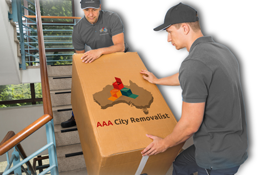Five Common Questions about Rental Bonds in QLD, Australia

Some people who plan to move around Queensland, Australia, have endless queries about rental bonds. This additional fee may sound new, though it's a familiar expense to those who frequently move.
Below list some of the FAQs about rental bonds.
What is a rental bond?
First in this list is the primal wonder: what in the world is a rental bond?
In many parts of Australia, movers need to pay the rental bond. It serves as a security deposit to the owner of the property. In return, the owner must issue a receipt to the tenant and lodge it with the Residential Tenancies Authority (RTA). The bond is refundable collateral once the tenant vacates the property, provided that he has not owed anything to the owner.
How much is a rental bond?
Next, we go straight to numbers.
Generally, the law dictates that if the weekly rent is $700 and below, the maximum bond amount should be four times that amount. On the other hand, if the weekly rent is $700 and above, the bond amount will be based on the negotiation between the owner and the tenant as the law provided no specifics on this matter.
How much are the maximum rent payment and moving-in fees?
When people realize the figures surrounding rental bonds, they begin to worry about other fees involved.
The maximum rent payment is one month's rent if there is a fixed-term agreement. For periodic arrangements, moveable dwellings, and rooming accommodation, the full price equals two weeks' rent.
The moving-in fee is also called “rent in advance” in QLD. This fee is the first rent payment of the tenant to the owner before moving into the property, and they can use it at a specific time. For example, based on the agreement, the tenant has to pay the rent amounting to $500. Before he moves in, he has to pay a $500 “rent in advance” fee. As he stays in the property for two weeks, it will use up his advanced price, and his next payment will be due after.
What are the payment methods?
As new platforms emerge, more renters assume that the method they use in daily money transactions is also the preferred method of their landlord. However, it's best to consult the property manager.
Before moving in, there should be a tenancy agreement indicating the rent amount, date and place of payment, and payment method. There are different methods the tenant can choose from. Rent can be paid in cash or cheque, thru credit card, via salary or pension deduction, via EFTPOS, can be deposited to a financial institution account approved by the owner, and other methods agreed on by both parties.
What if the tenant cannot afford to pay their rental bonds and other fees in full?
While some moving expenses are affordable, they add up quickly. This gives way to a more interesting question — what if the tenant couldn't pay all these fees in full?
Unfortunately, most owners would require all these costs settled before they allow tenants to move in. Hence, it is an account that a potential occupant should prepare for.
The good news is, there are fund sources who could lend renters a hand.
First, the Department of Communities, Housing, and Digital Economy offers loans and rental grants to qualified tenants. This assistance is enough to cover bonds and rental payments for up to two weeks. To check for eligibility and application process, those interested can visit the official website of the Queensland government.
If the government loan did not work for you or it fell short, find online lenders that provide bond loans in Queensland and other AU states. Most of these private bodies offer quick cash without credit investigations or collateral. However, you may still need to provide some proof of identification, work credentials, and other personal information.





